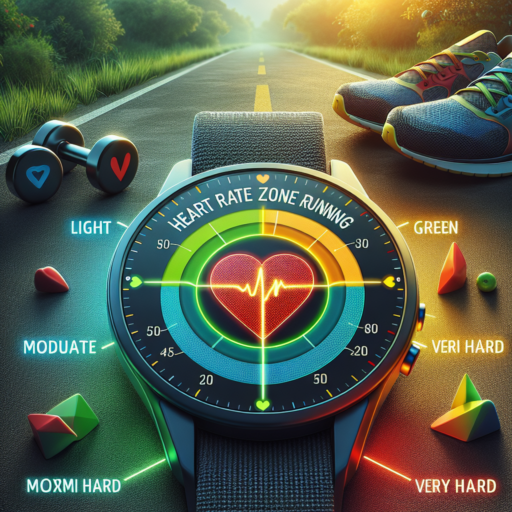Which heart rate zone should I run in?
Understanding the ideal heart rate zone for running can significantly improve your training, enabling you to burn fat efficiently, improve stamina, and strengthen your cardiovascular health. Heart rate zones are typically divided into several categories, each serving a unique purpose in your workout regime.
Identifying Your Heart Rate Zones
Your heart rate zones are percentages of your maximum heart rate (MHR), which can be estimated by subtracting your age from 220. These zones range from light intensity, ideal for warming up and cooling down, to high intensity, which boosts endurance and speed. For runners, operating in the right zone is key to achieving specific fitness goals.
- Zone 1: 50-60% of MHR, best for beginners or for long, slow runs.
- Zone 2: 60-70% of MHR, optimal for fat burning and building endurance.
- Zone 3: 70-80% of MHR, where cardiovascular and muscular endurance are improved.
- Zone 4: 80-90% of MHR, perfect for improving running speed and performance.
- Zone 5: 90-100% of MHR, mostly used for short bursts of high-intensity training.
For most runners, alternating between Zone 2 and Zone 3 during training sessions produces effective results in both fat burning and endurance enhancement. It’s essential, however, to tailor your training plan to your current fitness level and long-term objectives.
Is it better to run in zone 2 or 3?
When considering whether it is better to run in zone 2 or zone 3, it’s essential to understand the impact of each training zone on your body. Zone 2, often referred to as the «fat-burning zone,» is where you run at a moderate pace that allows you to speak in full sentences without gasping for air. This zone is primarily aerobic, meaning your body uses oxygen to generate energy, making it ideal for enhancing endurance and promoting efficient fat utilization.
Differences Between Zone 2 and Zone 3 Training
On the other hand, zone 3 is characterized by a higher intensity level where speaking full sentences becomes more challenging. This zone pushes your aerobic system to its limits, enhancing your cardiovascular system’s efficiency and increasing your lactate threshold. Running in zone 3 requires more energy from carbohydrates and trains your body to perform under more stress.
It’s crucial to incorporate both zones into your training regimen for optimal performance and health benefits. Zone 2 runs help build a solid aerobic base, crucial for long-term endurance and recovery. Training in this zone can be seen as laying the foundation upon which higher-intensity efforts are built. Conversely, zone 3 workouts are vital for improving your pace, speed, and overall performance. They prepare your body to handle and recover from the stresses of racing or high-intensity workouts.
Incorporating a mix of zone 2 and zone 3 runs into your training schedule allows you to enjoy the benefits of both endurance building and increased strength and speed. Understanding your fitness goals and listening to your body are critical in determining the balance that works best for you.
No se han encontrado productos.
Is 170 bpm OK when running?
Understanding your heart rate while engaging in physical activities such as running is crucial to both your performance and health. A common query among runners is whether reaching a heart rate of 170 beats per minute (bpm) is deemed safe. The truth is, the appropriateness of a 170 bpm heart rate largely hinges on various personal factors including your age, fitness level, and running intensity.
Essentially, the maximum heart rate (MHR) can be roughly calculated by subtracting your age from 220. This means, for younger athletes, a heart rate of 170 bpm might be well within their safe training zone. However, for older individuals, this could potentially signify pushing their limits too far. It’s important to note that these are general guidelines and individual thresholds can significantly differ based on personal health and fitness background.
Moreover, athletes who have undergone consistent and targeted training may exhibit greater tolerance to higher heart rates during running. This is attributable to their enhanced cardiovascular efficiency, which allows their heart to cope more effectively with increased demands. Distinguishing between a comfortable and an overexerted heart rate is therefore essential, and incorporating technology such as heart rate monitors during your runs can offer real-time insights and assist in maintaining a safe exercise intensity.
Is a 180 heart rate normal when running?
Understanding your heart rate during physical activities, especially running, is crucial for optimizing performance and ensuring safety. When it comes to reaching a 180 heart rate while running, several factors come into play, including age, fitness level, and running intensity. Generally, a heart rate of 180 beats per minute (bpm) might be on the higher end for most individuals, but it’s not uncommon among well-trained athletes or during intense running sessions.
It’s important to recognize that the maximum heart rate (MHR) varies from person to person and can be roughly estimated by subtracting your age from 220. For someone in their 20s, a 180 bpm heart rate could be within their high-intensity exercise zone. However, for older adults, this heart rate might exceed their recommended MHR, signaling they’re pushing too hard, potentially putting their health at risk unless they are accustomed to such levels of exertion.
To gauge whether a 180 bpm heart rate is normal and safe while running, consider monitoring how you feel at this intensity. Symptoms like dizziness, shortness of breath, or chest pain are red flags. Additionally, employing the use of a heart rate monitor can be instrumental in tracking your heart rate zones more precisely, ensuring you stay within a healthy range tailored to your fitness level and age.




